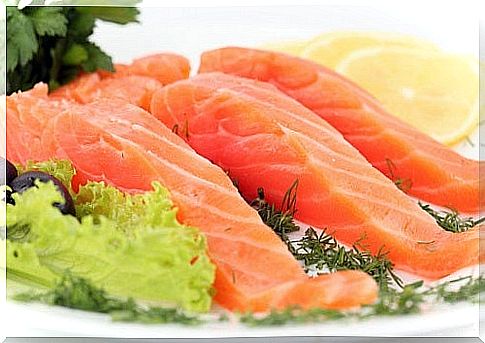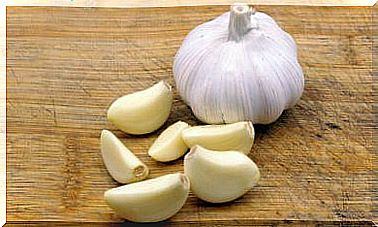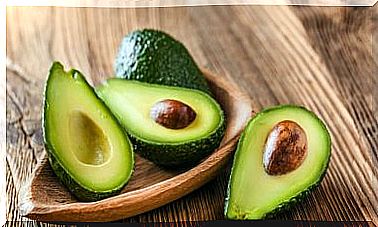Benefits Of Eating Fish
Fish must be present in your weekly meals, combined with vegetables and cereals. Due to its nutritional properties, it is a fundamental food in the diet.

Fish is a food of animal origin that has proteins, vitamins and minerals. In addition, it is an important source of fatty acids beneficial to health, such as Omega 3. Various studies support the benefits of eating fish and it is recommended to include it in the diet at least 2 or 3 times a week.
The consumption of oily fish is related to the prevention of cardiovascular diseases, since its fatty acids reduce LDL cholesterol and delay the accumulation of fat in the arteries.
Fish: part of a healthy diet

In the healthy eating pyramid offered by nutritionists, fish is undoubtedly present. It is considered a basic food for the development of children and for the contribution of nutrients in all ages. It is advisable to consume between two and four servings of fish per week, alternating between lean (white) and fatty (blue).
However, the Spanish Agency for Consumption and Food Safety (AECOSAN) warns about the risk of consuming some species due to their high mercury content. Specifically, this warning refers to large fish, and advises against their consumption or limits it, depending on the case, especially to pregnant women and children.
Fish is a nutritious, delicious and healthy food. Its consumption is preferred before that of red meat. It is high in protein and provides all the amino acids that the body needs. Keeps tissues, organs and defense system in perfect condition.
In addition, it provides us with heart-healthy fats, called Omega 3, which reduce bad cholesterol and triglycerides, lower blood pressure and improve neurological development. In turn, the caloric intake of fish is low because it has no more than 5% fat, which are also of the unsaturated type.
It should be noted that there is scientific evidence that regular intake of omega 3 fatty acids is capable of reducing the incidence of cardiovascular diseases, which is why they are considered very healthy.
It has a large amount of minerals and trace elements (zinc, magnesium, phosphorus, copper, iodine, calcium, potassium, etc.), it has vitamins A, B6, B12, D and E, which contribute to growth. And if that weren’t enough, fish is easy to digest, it can be metabolized better than red meat.
recommendations
In order for it to provide us with all its benefits, it is necessary to consume fish taking into account:
- People over 15 years of age (except pregnant women): Two to four times a week, combine blue and white fish. Reduce the intake of large predators (swordfish, salmon, pike, marlin).
- Pregnant women, infants and children (up to 15 years) : Eat fish no more than twice a week. Limit bonito and tuna to once a week, and to a small portion (up to 100 grams) for large predators. If this is done, do not eat any more fish until the following week.
Benefits of eating fish

Eating a balanced and healthy diet will offer positive health effects, there is no doubt about that. Fish must be present in your weekly meals, combined with vegetables and cereals. Due to its nutritional properties, it is a fundamental food in our diet. The benefits of eating fish are:
Has few calories
As mentioned above, the calorie content of fish is low. About 80 Kcal per 100 grams in the lean ones and up to 200 Kcal in the fatty or blue ones. Be careful because depending on the way you prepare this will increase.
A very common example is that of hake fillet when it is breaded with flour and fried. So, it is preferred to prepare it in the oven, grilled or steamed. Blue fish are also often roasted.
Provides nutrients for growth
That is why it is indicated for pregnant women, infants and young children. The protein content of fish is around 20%, although blue and crustaceans have more.
And best of all, they are of high biological value (it has all the essential amino acids). Therefore, it provides what certain stages require. Do not forget to alternate with legumes, cereals, nuts, eggs and dairy.
Provides calcium
Fish with bones (which are also eaten), such as sardines or anchovies, are a great source of calcium. Therefore, it helps in the formation of teeth, to take care of bone health and in the contraction of muscles. It also serves to clot the blood and prevent diseases such as osteoporosis.
In any case, to guarantee adequate bone health, it is not enough just to consume this mineral. According to a study published in Histochemistry and Cell Biology , vitamin D levels must be optimal.
Presents iodine
Both fish and shellfish are an alternative to reduce iodine deficiencies, which can cause, for example, thyroid diseases and goiter. This is evidenced by an investigation published in Minerva Medica.
In turn, this nutrient is essential during pregnancy, breastfeeding and growth of the baby in the first months of life. The species that have the most iodine are red mullet, salmon, cod, mussels, tuna and bonito.

It prevents illnesses
Another benefit of eating fish is that it has a large amount of vitamins, especially group B (1, 2, 3, 12), A and D and to a lesser extent E. All of them are a primary factor to protect the body of certain diseases, especially degenerative ones, such as cancer or atherosclerosis.
They also promote the absorption of calcium and phosphate in the intestines and stimulate the kidney to do the same.
Protects heart and arteries
Fish contains polyunsaturated fatty acids, between 25 and 50% depending on the species. The Omega 3 and 6 that are present in this food help reduce cholesterol and, at the same time, protect heart and arterial health. It is advisable to consume fish to avoid heart attacks or cardiovascular accidents.
Include fish in the usual diet
Now that you know the benefits of eating fish, what are you waiting for to incorporate it into your diet? It is a very complete food that will undoubtedly bring you great benefits. However, try to avoid consuming it fried, as this increases its caloric value and forms trans-fatty acids.









